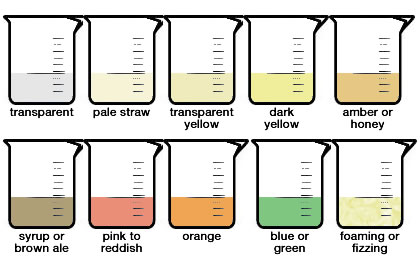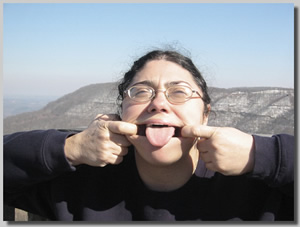Water – Its Blessings and Healing
Water – Its Blessings and Healing
This article was first published on May 28, 2015. I am re-publishing with the intention of reviewing fundamentals of staying healthy during these stressful times.
Why is water so important?
Many of us are aware of the importance of drinking enough water. Getting our daily dose of water helps our organs perform their functions, keeps our skin clear and hydrated, and allows physical action in our bodies to flow smoothly. Even with this knowledge, it can still be challenging to drink all the water our bodies thirst for daily. Drinking plenty of water is critical. Those who are not drinking enough may experience poor digestion, sluggish thinking, skin breakouts, headaches, bad breath and general fatigue.
To start your day right, set a large glass of water by your bed each night and drink it when you wake up. Drinking water first thing in the morning pulls out toxins from the previous day and freshens your system for the day ahead. Keep a bottle of water accessible throughout the day, whether you are on the go or at a desk. Having a bottle of water close by will remind you to take a sip when thirsty. The first sip will usually let you know how much more water you need. A sip or two may be enough, or you may need a big glass. If you drink most of your daily water before early evening, you most likely will not be thirsty before bed. This is good, because drinking before bed and then waking to use the bathroom disturbs your peaceful night’s sleep.
Also, drinking tea or juice and eating raw fruits and vegetables, in addition to your daily water intake, contributes to the hydration process. When you are heading out for the day, automatically reach for your bottle of water. (To protect our environment, please consider using refillable water bottles).
How do you know if you are drinking enough water?
The color of our urine has been used as a tool for diagnosis since ancient times. Experienced health professionals can tell a lot about what’s happening in the human body by the color, density, and smell of the urine. I believe that physical observation is the first step towards understanding the health of our body systems. Education is empowerment. By understanding what’s happening in our body we can better partner with our health care practitioner to properly diagnose any illness.
Urine Color can be affected by what you eat, medicines you take, laxatives, what you drink, and any other injected or ingested substance. This information* is presented only as a guideline and is not intended to replace medical advice.

- No Color (Transparent) – You may be drinking too much water and may wish to cut back.
- Pale Straw Color – Normal, healthy, well-hydrated
- Transparent Yellow – Normal
- Dark Yellow – Normal, but drink some water soon
- Amber or Honey – Your body needs water. Drink some water now. It’s not getting enough.
- Syrup or Brown Ale – This color may indicate liver disease or severe dehydration. Drink water and consult with your doctor.
- Pink to Reddish – Have you eaten beets or blueberries lately? If not, you may have blood in your urine. It could be NOTHING or it could be a sign of a serious medical condition, such as: kidney disease, tumors, urinary tract infection,prostate problem, or something else. PLEASE CONTACT YOUR DOCTOR.
- Orange – You may not be drinking enough water, have eaten something with a food dye, or you could have a liver or bile duct condition. PLEASE CONTACT YOUR DOCTOR.
- Blue or Green – It’s probably something you ate that had a certain food dye. It could also be caused by certain rare genetic diseases or bacteria. PLEASE SEE YOUR DOCTOR IF IT PERSISTS.
- Foaming or Fizzing – If this occurs occasionally, it’s probably harmless. But it COULD indicate excess protein in your urine. If you are seeing this often, please consult with your doctor.
Remember that you can see a lot from your urine but it does not replace the information you can get from a urinalysis. Get regular checkups. Blood in the urine is often invisible to the naked eye and elevated glucose levels in your urine may indicate diabetes.
But wait, there’s more….
As a Civil Engineer, I am cognizant of the expected population growth that will precipitate an increased demand for drinking water in the next 20 years. I am also very appreciative of the work that has been done to bring water to the population centers by the workers who actually built the water treatment and distribution systems that allow us to have potable water at our fingertips.
In one of his technical papers, Dr. Daniel A. Okun, Professor of Environmental Engineering, Emeritus at the Univ. of North Carolina in Chapel Hill, provided a brief history of how water was first brought to our cities.
“The introduction of piped water to cities in the mid-19th century led to the spread of cholera and typhoid in the United States and the other industrialized countries. Filtration and then chlorination around the turn of the century virtually eliminated waterborne enteric disease in the industrialized world. The development of synthetic organic chemicals following World War II and the recognition that chlorine, which is so important for disinfection, reacts with natural and other organic precursors in the water, producing carcinogenic byproducts, shifted the major emphasis in water quality in the industrial world away from infectious disease to a concern for control of trace chemical contaminants. The recent emergence of waterborne giardiasis and cryptosporidiosis is shifting emphasis back to a concern for the control of enteric infectious disease. Particularly troublesome is that water meeting current microbiological standards has been demonstrated to be responsible for diarrheal disease. The principal conclusion to be drawn from these changes is the affirmation of the original principles for the protection of drinking water quality, that water intended for potable purposes should be drawn from the highest quality sources available, that the sources should be protected, and that the treatment must be appropriate and reliable.”
Having said that, we have to bless the people who have built, operate and maintain our water treatment systems. We must also be aware of the damage that is done to the water crystals by the harsh chemicals and the actual transportation of the water through the pipes. That is why I’m so excited when I see the research of Dr. Masaru Emoto. He has proven, through research and technology, that music can actually correct distorted frequencies within water molecules.
For centuries, we have turned to classical music for relaxation and healing. In his book, Water Crystal Healing – Music and Images To Restore Your Well-Being, internationally acclaimed water researcher Dr. Masaru Emoto, presents an incredible collection of music and water-crystal photographs that have been found (through his research) to benefit those who suffer from common physical and emotional imbalances.
During his research, he discovered why certain music and thought patterns have healing benefits. What he found was that the rhythm, tempo, tone and melody of the music can actually correct distorted frequencies within the cells of our body. What is presented in his beautiful book is that the combination of images, words and music concentrates consciousness and provides a unique experience for healing.
As an Engineer, I am fascinated with the research methodology Dr. Emoto utilized. He used micro-cluster water and magnetic resonance analysis technology.
In his various books, the first of which was published in 1999, Dr. Emoto, a doctor of Alternative Medicine, introduced the novel idea that water not only reflects the physical word around it (as when we use a placid lake or pond as a mirror), but it also reflects the consciousness of the being surrounding it.
The experiment he used to discover this included bottles filled with water, that were set under either a positive or a negative influence. For example, some bottles of water were wrapped with written notes, with the writing facing inside the bottle that said, “thank you.” This was done in various languages. No matter what language was used, the water in these bottles, when frozen, created complete crystals that were lovely to behold. Water over which a priest prayed, with love and gratitude, created the same type of crystals. Conversely, unpleasant, incomplete, and malformed crystals were created in water exposed to people saying or writing, “You fool,” or other negative expressions.
By exposing water to a particular word or piece of music, freezing it, and photographing the ice crystals formed, Dr. Emoto has shown that from beautiful words and music, come beautiful crystals, and from mean-spirited, negative words, come malformed and misshapen crystals. What is the significance? It becomes clear when we remember that the adult human body is approximately 70% water and infant bodies are about 90% water. We can be hurt emotionally and, as the water can be changed, for the worse physically by negativity. However, we are always closer to beauty when surrounded by positive thoughts, words, intentions and ultimately those vibrations.
Let’s remember to take a moment before we drink to bless the water that gives us life.
References
Further Reading on Dr. Emoto’s work: http://hado.com/ihm/
*Urine Color for diagnosis: http://health.clevelandclinic.org
Previous posts about water:
Food Focus: Water
Water



Ruth…I have really enjoyed your new newsletter! It captures one’s interest immediately with valuable info we all should know. I especially enjoyed hearing your points on Dr Emoto’s water experiments. I have been fascinated with his experiments for a few years and appreciated your summary of his valuable study and results. Thank you!
Thank you so much!!! Have a blessed day!!!